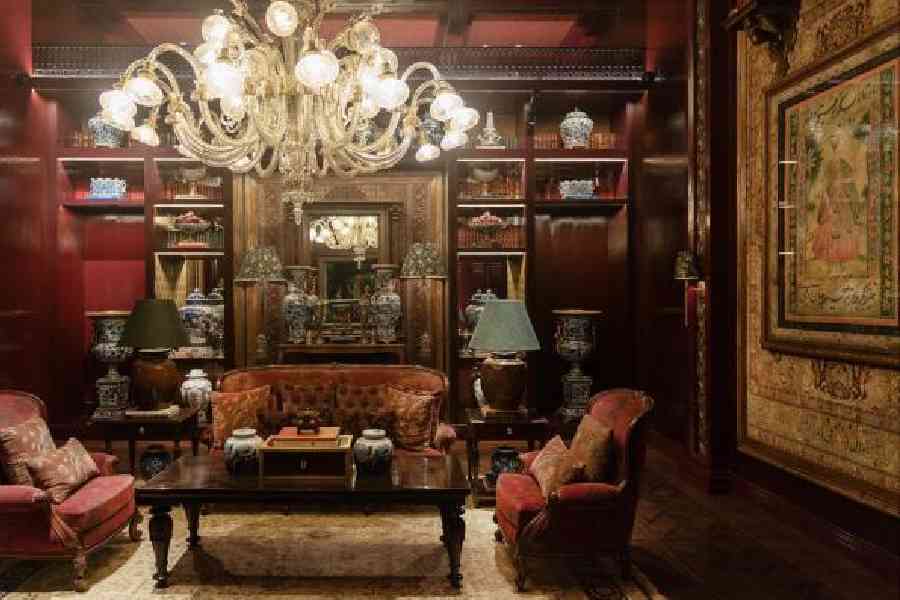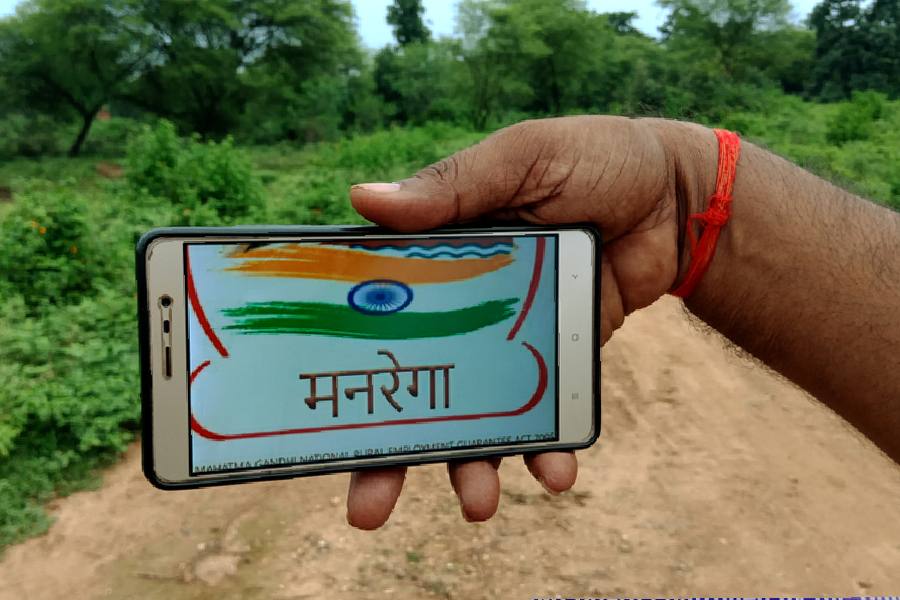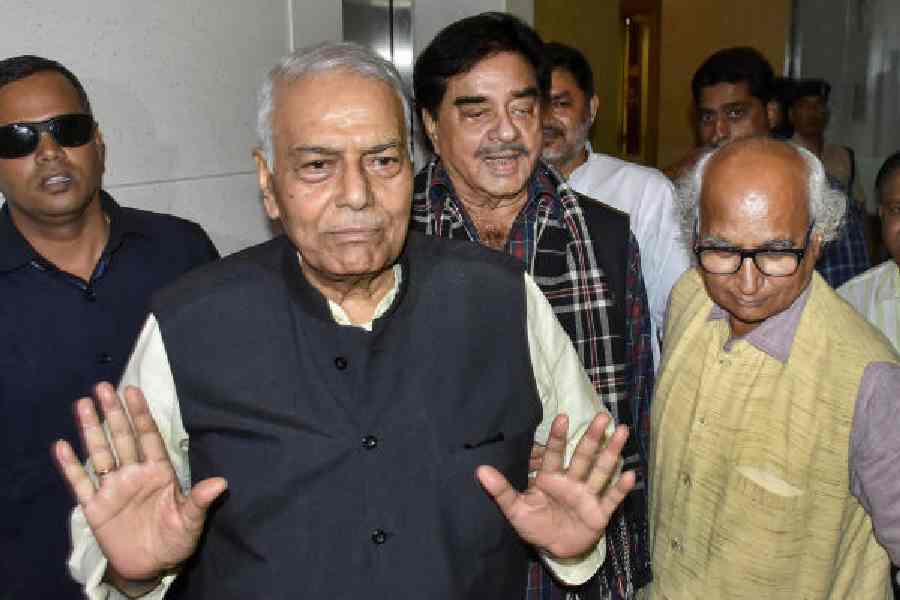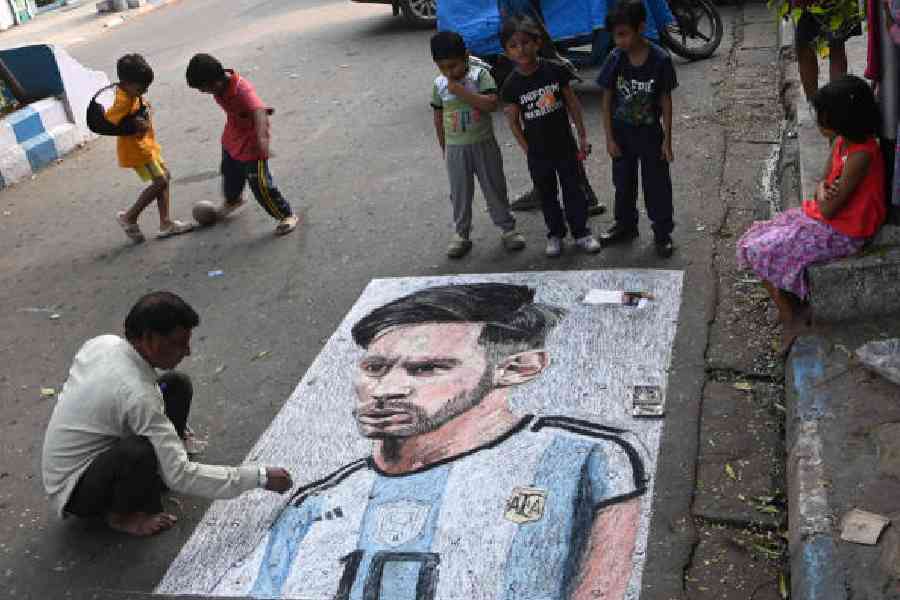Sabyasachi Mukherjee, the man with the Midas touch, has had a long association with Asian Paints, and Nilaya Anthology houses the Sabyasachi Art Gallery on the UG level and Sabyasachi for Nilaya on level ‘M’. Dressed in a shirt and a pair of denims with a red stole, adding a touch of colour to his ‘minimal’ personality, Sabya stood by like a guardian and saw to it that artist Atish Mukherjee’s labour of love, that’s currently on display at the gallery, reached as many eyes and hearts as possible.
“This is the first public offering by the Sabyasachi Art Foundation. Atish Mukherjee has been working with me for 15 years at the foundation (The Sabyasachi Art Foundation). This is his first independent solo exhibition with us. He sold out everything in the first hour,” Sabya told t2 at the launch.
A day later, he narrated the story behind the foundation to a motley group of listeners, all hooked to his every word. “The first space is very close to my heart. It’s probably the biggest and the most audacious and most personal project I have ever undertaken in my life. It’s the Sabyasachi Art Foundation. My mother was an exemplary artist but she was a failed artist because she had no money and had to choose between becoming an artist and becoming a mother. She gave up art to raise me and my sister.... When I became a designer, I carried that guilt with me because somebody sacrificed for me to become who I am today. I decided that at some point I would start an art foundation... a voice for struggling artists.”
“He is one the greatest artists India will ever see, post MF Husain and (FN) Souza. He has sold his collection. Atish creates worlds within worlds and what you see is a series of nudes and his inspiration has been nature. He uses a lot of primitive earth colours, a lot of colours you use in Kumartuli to paint the Goddesses, natural and modern pigment, tempera, and gouache. When I look at his work, I see resolution,” he said.
A tiny flight of stairs led to Sabyasachi’s second space. The den of modern opulence, and unapologetically so. It’s here that we sat down with Sabyasachi for a chat...
You started The Sabyasachi Art Foundation more than 10 years back. Was your mother the only factor in your decision to set up the foundation?
Actually, 15 years. I’ve documented it as 10 because that’s when the foundation started shaping, but it’s been 15 years.
She was the only reason. I always wanted to do it. And, you know, coming from Bengal, you can’t dissociate yourself from art and literature and culture, and ki hoi janato, khub struggle kore uthechhi. I didn’t have anybody to mentor me. And sometimes, when you go through the journey, you realise that you have to make it easier for other people. I mean, why should they waste the kind of time that you did? If I had the right people helping me at a younger time, what I’ve done at 51, I could have done at 31. I would have 20 more years to give back to the world. So I just don’t want good, talented people to waste their time. Of course, the danger of that is that, you know, they don’t go through life learnings. The good thing with Atish is that he’s already been shaped and defeated and pushed and strengthened by life. So for me, he was the right artist who came to me at the right time.
What did you see in his work that resonated with you and stayed with you?
Honesty, ingenuity, strength and resolve, very strong work.
Your aesthetics are impeccable and bear your signature. How do you pass that on to the people you work with, or how do you mould them?
You know, I think birds of a feather flock together. I think people who come and apply for jobs with Sabya are people who like the aesthetic, and they already probably have that because I go through a rigorous grilling process of getting people into my design team. And I’m also much, much older than them because most of them are 31-32. So, I am like a parent to them. I constantly teach them, and while teaching them, I also learn, which is one of the reasons I don’t feel a generation gap because I’m constantly having exchanges with people three generations younger than me.
Nilaya was a seamless collaboration for you. What did it mean for you to be able to open your first Sabyasachi Art Foundation public art space in the gallery. A dream realised?
The main dream was to open the first art gallery in Calcutta, but then when I realised the scale of what was being built by Nilaya, and you know, art is really being bought a lot by decorators now for their clients... the world’s best, India’s best decorators would come here. And I understood that, rather than my hubris of trying to build it in Calcutta, it would immensely benefit Atish and the foundation, because he would get the right platform. I mean, you know, the thing is that out of the 12 artworks that he had when I opened it to the public, here, 11 got sold immediately. And that’s very rare for a completely unknown artist. And I asked every one of them, because they’re friends, many of them don’t even buy Sabyasachi clothing, that is it me, or is it the artist? And they said it’s the artist. I don’t want Atish to ever to grow in the shadow of Sabyasachi. I want him to be an independent person. I think coming to Bombay allows him to do that because, you know, it’s a very anonymous city. It belongs to everybody and I thought it was the right platform.

sabyasachi
You stood there like a parent the whole evening....
I felt like a comrade because I’ll tell you in years to come, I think Atish will become more famous than me, and if I can help him in his journey, and if he doesn’t get swayed... I was telling everybody that have you seen this movie, A Star is Born... I said, this is what it feels like. And, I’ve always believed in supporting people who actually have unique voices, because, I understand how powerful my name has become. And this power has been given to me by the public and the consumers, and if I don’t platform the right person, I’ll be also letting my consumers down.
How has art shaped you and how do you see art now in the present times?
I don’t believe in the art that is been produced today... I think art has to have a perfect synthesis between the hand and the mind. And too much of art is being pushed by influencers and by marketing, and one has to struggle to rise above that. And art, unfortunately, has become a commodity for many because of the greed of the artist and the greed of the agents representing them to make more and more and more money.
And my foundation was created to be able to bring about change in that, platform the right artist, give them the right price, and we also platform true artists who work without apprentices, have the perfect synthesis of hand and mind and who will not commission because I’ll not allow them to commission. And so that’s a part of the statement that we sign, documentation that we sign at the foundation so that art can thrive without the commercial greed of both consumers and suppliers.
Did you ever feel like taking up the brush and paint?
I am a terrible artist. I do a little bit here and there... it’s all inside my head.
Would you want to get into the motivational speaker space because listening to you is inspirational...
I do a lot. I do speak in different colleges and schools. I like to speak to younger people because, you know, I think sometimes the way we’ve built a business, because we’ve built it through a lot of idealism, and young students have a lot of idealism. My job is to only whisper in their ears, and irrespective of what happens, don’t destroy your idealism, because that will take you to the end. It might be a longer journey, but it’ll be a secure journey.










